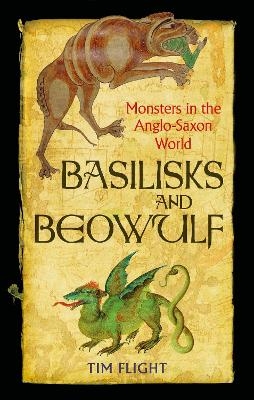
Basilisks and Beowulf
Monsters in the Anglo-Saxon World
Seiten
2023
Reaktion Books (Verlag)
978-1-78914-774-2 (ISBN)
Reaktion Books (Verlag)
978-1-78914-774-2 (ISBN)
A fascinating look at the Anglo-Saxons' obsession with monsters.
Why were the Anglo-Saxons obsessed with monsters, many of which did not exist? Drawing on literature and art, theology and a wealth of first-hand evidence, Basilisks and Beowulf reveals a people huddled at the edge of the known map, using the fantastic and the grotesque as a way of comprehending the world around them.
For the Anglo-Saxons, monsters helped to distinguish the sacred and the profane; they carried God’s message to mankind, exposing His divine hand in creation itself. At the same time, monsters were agents of disorder, seeking to kill people, conquer their lands and challenge what it meant to be human even. Learning about where monsters lived and how they behaved allowed the Anglo-Saxons to understand their place in the world, as well as to apprehend something of the divine plan. It is for these reasons that monsters were at the very centre of the Anglo-Saxon worldview. From map monsters to demons, dragons to Leviathan, we neglect them at our peril.
Why were the Anglo-Saxons obsessed with monsters, many of which did not exist? Drawing on literature and art, theology and a wealth of first-hand evidence, Basilisks and Beowulf reveals a people huddled at the edge of the known map, using the fantastic and the grotesque as a way of comprehending the world around them.
For the Anglo-Saxons, monsters helped to distinguish the sacred and the profane; they carried God’s message to mankind, exposing His divine hand in creation itself. At the same time, monsters were agents of disorder, seeking to kill people, conquer their lands and challenge what it meant to be human even. Learning about where monsters lived and how they behaved allowed the Anglo-Saxons to understand their place in the world, as well as to apprehend something of the divine plan. It is for these reasons that monsters were at the very centre of the Anglo-Saxon worldview. From map monsters to demons, dragons to Leviathan, we neglect them at our peril.
Tim Flight obtained a doctorate in Anglo-Saxon Literature from Magdalen College, Oxford, in 2016. Since then, he has been writing full time, and has contributed articles to History Today and BBC History Magazine, among many other publications.
INTRODUCTION
I THE MAP MONSTERS
II OF WOLF AND MAN
III HIC SUNT DRACONES
IV SAINTS AND SATANAS
V THE DEVIL AND THE DEEP BLUE SEA
VI MEARCSTAPAN, PART ONE: THE GRENDELKIN
VII MEARCSTAPAN, PART TWO: BEOWULF AND OTHERS
CONCLUSION
REFERENCES
BIBLIOGRAPHY
ACKNOWLEDGEMENTS
PHOTO ACKNOWLEDGEMENTS
INDEX
| Erscheinungsdatum | 26.07.2023 |
|---|---|
| Zusatzinfo | 20 illustrations |
| Verlagsort | London |
| Sprache | englisch |
| Maße | 129 x 198 mm |
| Themenwelt | Sachbuch/Ratgeber |
| Geschichte ► Allgemeine Geschichte ► Mittelalter | |
| Geisteswissenschaften ► Geschichte ► Regional- / Ländergeschichte | |
| ISBN-10 | 1-78914-774-3 / 1789147743 |
| ISBN-13 | 978-1-78914-774-2 / 9781789147742 |
| Zustand | Neuware |
| Informationen gemäß Produktsicherheitsverordnung (GPSR) | |
| Haben Sie eine Frage zum Produkt? |
Mehr entdecken
aus dem Bereich
aus dem Bereich
eine neue Geschichte des Mittelalters
Buch | Hardcover (2023)
C.H.Beck (Verlag)
CHF 53,20


